#Types of NFT Marketplaces
Text
NFT Marketplaces To Watch Out For In 2024
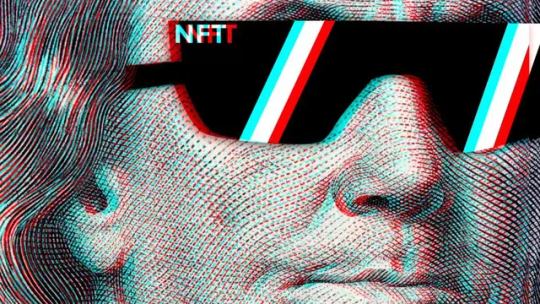
What are NFTs?
Suppose you borrow $100 from your friend, you need to pay him back with the exact same value, but not necessarily the exact same bill. You can return two $50 bills or ten $10 bills, it’s fungible. Although when you borrow a friend’s car, you cannot return a different car, thus a car is considered non fungible, collectible and is unique. Non-fungibility is a physical asset’s unique property. NFTs are unique, they cannot be exchanged or traded equivalently unlike money.
NFTs or Non-Fungible Tokens are cryptographic assets minted (created) through blockchain technology, and have unique identification codes and meta-data, which makes each of them distinguishable. They can be transferred to other wallets, traded on the blockchain or leased to someone through a special smart contract with a time horizon.
NFTs are minted as smart contracts that assign ownership and manage their transferability. When someone creates or mints an NFT, they execute code stored in smart contracts that conform to different standards, such as ERC-721. This information is added to the blockchain where the NFT is being managed. The minting process, from a high level, has the following steps that it goes through:
Creating a new block
Validating information
Recording information into the blockchain
Use Cases of NFTs
Authenticity and Ownership - As the blockchain can permanently store information about the product. NFT smart contracts can be used to check for the rarity, owner, and authenticity of the products. This can be applied to real estate, music items, videos, and more.
Digital Content - The most common use of NFTs today is digital content. Content creators see their profits enhanced by NFTs, as they power a creator economy where creatives maintain ownership over their content on platforms where they are publicised. An NFT could represent a key that unlocks access to a certain service or piece of content. This would allow some content creators to monetize their work for the first time ever. At Mintcad users can create an NFT for CAD files for the first time.
Gaming Items - NFTs are changing the gaming industry from its roots. From game developers to players, NFTs have caught interest for their benefits to both. For example, an NFT could represent a character in a game. The NFT would be stored on a blockchain and would be transferable to another player if the original owner decides to sell it. These can be applicable to other game items as well. This is where the major development towards the Metaverse is happening.
Domain Names - NFTs provide your domain with an easier-to-remember name. It works like a website domain name, making its IP address more memorable and valuable, usually based on length and relevance.
Loyalty points or rewards - A company could issue NFTs that can be redeemed for discounts or special offers. It would give customers an incentive to keep using the company’s products or services.
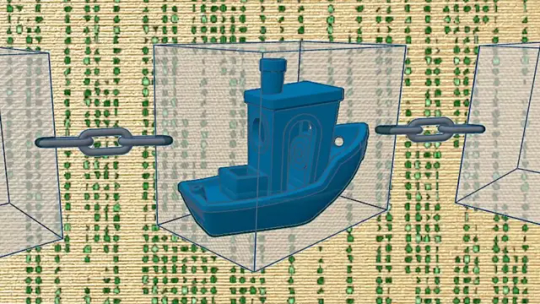
What’s the size of the NFT Market?
Global NFT transaction volumes are on pace to surpass last year's peak soon, but the monthly declines beginning 2022 are troubling for the once-scintillating market. Total sales hit $37 billion as of the first week of May, according to a report from blockchain analysis firm, Chainalysis, compared with $40 billion for all of 2021.
There are around 15,000 to 50,000 NFTs being bought and sold every week. The right to the first-ever tweet was converted into an NFT, and sold for a record $2.9 million, by Twitter founder Jack Dorsey.
This tweet just said, "just setting up my twttr."
How to buy an NFT?
We can buy or sell NFTs through an NFT Marketplace. These are eCommerce platforms like Amazon or eBay where different products are listed by sellers, and buyers.
NFTs for digital assets can be stored, traded, and displayed to a large audience, an evolved business model is developing through these Marketplaces.
Three Simple steps to buy an NFT:-
Purchase Ethereum. (Since most NFTs are Ethereum-based tokens, most marketplaces for these collectibles accept primarily ETH tokens as payment.)
Connect your Wallet to an NFT Marketplace. There are many marketplaces to trade on.
Create, Sell, Buy or Lease the NFT.
Types of NFT Marketplaces.
Digital Collectibles: Examples of NFTs in such a marketplace are Computer aided design files for 3D Printing, game/trade cards, trophies of wins, and unique videos of rare gaming moments, which are digitized as a non-fungible token or NFT.
Example:- Opensea
Gaming: Blockchain Games use NFT marketplaces in two ways. Some blockchain games collaborate with gaming marketplaces to allow tokenization of their in-game assets into NFTs. Then, there are pure NFT marketplace-centred games that are exclusively built on the concept of tradable collectibles. Such games are modelled after traditional games like football, racing, strategy, arcade, and even virtual worlds.
Example:- Axie Infinity
Real Estate: It is an online platform for fractional real estate where investors and agents can collaborate with each other to buy and sell their assets. It gives access to high-end, unique, and in-demand properties which can be converted into non-fungible tokens and crowd funding.
Music: The music industry may have finally started taking NFTs more seriously. A number of artists have launched music projects that have garnered fan attention and generated millions of dollars in revenue. Entire music albums or specific songs can be converted into NFTs and sold or leased (per listen) directly via special NFT marketplaces.
Example:- Airnfts
Investment Projects: In this model, the NFT marketplace can function like a stock market, and allow the users to buy/sell specific NFTs via trading. In some of the advanced and regulated NFT marketplace, such transactions can also have legal validity, similar to real estate.
Metaverse: A metaverse NFT marketplace is a technical concept of creating and integrating NFT assets into the virtual spaces of the metaverse. The metaverse is considered a parallel universe where avatars (representing the unique identity of users) can perform activities similar to the real world with the use of VR headsets.
Example:- Cryptovoxels, Decentraland
Top 10 NFT Marketplaces in 2023
1. OpenSea
2. Mintcad
3. SuperRare
4. Jump.trade
5. Rarible
6. Axie Infinity
7. Nifty Gateway
8. Solanart
9. Binance
10. NBA Top Shot
This content is originally published on Mintcad's Website: NFT Marketplaces To Watch Out For In 2024
0 notes
Text
https://www.scribd.com/document/695283087/NFT-Marketplaces-Variety-in-a-Glance
There are various types of NFT (Non-Fungible Token) marketplaces, each catering to different niches, interests, and functionalities. Here are some common types of NFT marketplaces:
0 notes
Text
How to create NFT Marketplace and their three types you should know?
An NFT (non-fungible token) marketplace is an online platform where users can buy, sell, and trade NFTs.
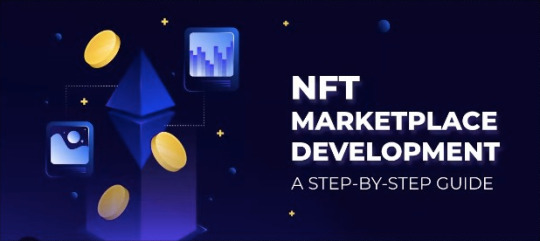
NFTs are digital assets that are unique and cannot be replicated. They are typically used to represent ownership of digital art, collectible items, and other digital assets that have value.
step by step how to create nft marketplace development
1.Creating an NFT marketplace from scratch can be a complex process that involves several steps. Here is a general overview of the steps involved in developing an NFT marketplace development:
2. Define the scope and goals of your NFT marketplace: Before you begin development, it is important to clearly define the scope and goals of your NFT marketplace. This should include identifying the types of NFTs you will allow to be sold on your marketplace, as well as your target audience and the features you want to include in your marketplace.
3. Choose a blockchain platform: NFTs are built on top of blockchain technology, so you will need to choose a blockchain platform to use for your marketplace. The most popular blockchain platform for NFTs is Ethereum, but there are other platforms like Binance Smart Chain, Polygon and more, that can also be used.
4. Develop a smart contract: Once you have chosen a blockchain platform, you will need to develop a smart contract that defines the rules and logic of your marketplace. This smart contract will handle things like token minting, buying, and selling. You can use existing templates or libraries or create your own smart contract using Solidity, an Ethereum specific language for Smart contract
5. Build the user interface: After you have developed your smart contract, you will need to build the user interface for your marketplace. This should include a front-end that allows users to easily browse and purchase NFTs, as well as a back-end for managing your marketplace and handling transactions.
6. Deploy your contract: After your smart contract is ready, it will have to be deployed on the blockchain network you have chosen. This can be done by using a tool like Truffle, Remix or directly through Ethereum’s Geth client.
7. Integrate a payment gateway: Finally, you will need to integrate a payment gateway into your marketplace so that users can pay for NFTs using cryptocurrency. Some popular payment gateways are Stripe, Paypal or even direct crypto wallets integrations.
It is important to note that creating an NFT marketplace development service is not a trivial task and requires a good understanding of smart contract development and blockchain technology. If you are new to this field, it’s better to hire a team of experienced developers to ensure a high-quality end product that meets your requirements.
These are the three types of nft marketplace :
- Exclusive NFT marketplaces
- general NFT marketplaces, and
- specific NFT marketplaces
are three types of NFT marketplaces that differ in terms of their access and offerings.
Exclusive NFT marketplaces:
These are NFT marketplaces that are invite-only and typically used by high-net-worth individuals, large organizations, or specific communities of artists and collectors. They often have a more limited selection of NFTs available, but they can have rare or valuable offerings that cannot be found in other NFT marketplaces.
General NFT marketplaces:
These are the most common type of NFT marketplaces and are accessible to anyone with an internet connection. They allow anyone to buy, sell, and trade NFTs and often have a wide variety of NFTs available. They are not focused on a specific theme or type of NFTs, which makes them more flexible for different user needs and preferences.
Specific NFT marketplaces:
These are NFT marketplaces that are focused on a specific theme or type of NFTs, and are typically curated by a team of experts. They can be a great way to find high-quality NFTs that are relevant to your interests. They often have a more limited selection of NFTs available, but they can be good for discovering new types of NFTs, trends and also its creators.
Note that these classifications are not strict and some marketplaces might overlap on some features.
To know more visit : NFT marketplace platform development
#How to create NFT Marketplace#create NFT Marketplace#NFT Marketplace and their three types#three types#NFT Marketplace#create an nft marketplace
1 note
·
View note
Text
A Non-Fungible token(NFT) is a one-of-a-kind unit of data stored on a Blockchain, which is a type of Digital Ledger. With this guide, you will be able to understand the concept of NFTs, their use, how do they differ from Cryptocurrency, how do NFTs work, and why NFTs could be beneficial for you!
#NFT#NFT Marketplaces#NFTs#buying NFTs#Crypto World#Blockchain#Non-Fungible token#Digital Ledger#Types Of NFTs#Advantages Of NFTs#How To Make NFTs#create an NFT#Buy NFT
0 notes
Text
Following the bankruptcy of one of the world’s largest cryptocurrency exchanges, FTX, the price of bitcoin (BTC) has tumbled again. It is now about $16,500 – a far cry from the all-time high of $66,000 just a year ago.
Why such a large drop in value? It’s because of the highly toxic combination of an exchange (an electronic platform for buying and selling) called Binance, a stablecoin (a crypto whose price is pegged 1:1 to the US dollar or another “fiat” currency) called tether, and the skilled professional traders running high-frequency algorithms.
Unlike stocks, bitcoin can be traded on many different exchanges, but Binance has more than 50% of the entire crypto market, and as a result it sets the price of bitcoin and other cryptocurrencies. In order to buy cryptocurrencies, traders must convert fiat money, into a stablecoin like tether. Bitcoin-tether has by far the largest volume of all products on Binance, and because one dollar usually equals one tether, trading on bitcoin-tether sets the dollar price of bitcoin. But when bitcoin crashes, so does the entire crypto ecosystem.
The issue is that Binance is only self-regulated, meaning it is completely unregulated by traditional market regulators such as the Securities Exchange Commission in the US or the Financial Conduct Authority in the UK. This is a great attraction for professional traders because they can deploy high-frequency price-manipulation algorithms on Binance, which are against the law in regulated markets. These algorithms can cause rapid price movements up and down, making bitcoin extremely volatile.
Binance does its own clearing and settlements of trades, the same as all other self-regulated crypto exchanges. This means that losing counterparties – those on the other side of profitable trades – often have their positions wiped out automatically without notice.
Unlike normal exchanges, self-regulated crypto exchanges aren’t required to raise the alarm when a trade has lost so much money that the collateral in the account needs topping up. Instead, traders are solely responsible for funding their accounts by continually monitoring something called the liquidation price. This is done automatically by the algorithms run by professional traders, but it is exhausting for ordinary players like you and me, who need to remain highly vigilant whenever manipulation is being used to create the volatility that professional traders use to increase their profits.
When professionals trade against each other it is called toxic flow, because the chance of profit is more like 50-50 if their algorithms are equally fast and effective. Professional traders much prefer their counterparty to be an ordinary investor.
This is worrying because Binance has been hugely successful at attracting ordinary investors. The fees it earns from this kind of investor have funded its very rapid expansion; it is now branching out with its own stablecoin, blockchain and NFT marketplace. Binance is consolidating its role as the Amazon of crypto, following a very effective business model.
In some ways one can liken the current circumstances in crypto markets to the burst of the dotcom bubble in 2001-2. The venture capital that had poured into internet startups in 1999-2000 suddenly dried up, as many companies went bankrupt. This year, Three Arrows Capital, one of the largest crypto hedge funds, defaulted on its loans, and major crypto-lending companies Celsius and Voyager filed for bankruptcy as the price of bitcoin collapsed, following some unexpected and shocking attacks on a new type of stablecoin called Terra. Following the bankruptcy of FTX, several other exchanges such as Gemini, and lending platforms (shadow banks) including Genesis are preventing customers from withdrawing their funds.
We shall see a lot more of this contagion, precipitating widespread bankruptcies among startups now that venture capital has dried up in the crypto sector. More exchanges and lending platforms, as well as blockchains, NFT marketplaces, data aggregators and analytics companies, will all bite the dust.
Binance could emerge from this chaos with a monopoly. But right now, this non-domiciled and self-regulated company still needs fee revenue from ordinary investors, and it needs market makers (professional traders akin to unfriendly stall holders on the exchange) to conduct its business.
The danger is that everyone is very scared now, so the only way to draw in ordinary investors is to pump up the price of bitcoin again. This would tempt people back into the crypto game, only to have their savings wiped out as the cycle of volatility continues.
13 notes
·
View notes
Text
What Are NFTs?
NFT stands for non-fungible token. A non-fungible token is a unique digital asset that cannot be replaced with another asset of the same kind. NFTs are stored on a blockchain, which is a secure and transparent database.
NFTs can represent anything from digital artworks to in-game items. They can also be used to represent physical assets, such as real estate or cars.
There are a number of reasons why people are interested in NFTs. First, they offer a new way to own and collect digital assets. NFTs are unique and cannot be copied, which makes them a more valuable investment than traditional digital assets.
Second, NFTs can be used to prove ownership of digital assets. This is important for artists and creators who want to protect their intellectual property. NFTs can also be used to track the provenance of digital assets, which can be helpful for collectors and investors.
Third, NFTs can be used to create new types of digital experiences. For example, NFTs can be used to create tickets to events, or to unlock exclusive content. This has the potential to revolutionize the way we interact with digital content.
Overall, NFTs are a new and exciting technology with the potential to change the way we own, collect, and interact with digital assets. If you're interested in learning more about NFTs, I encourage you to do some research and see if they're a good fit for you.
Here are some additional details about NFTs:
NFTs are created using a process called "minting." When an NFT is minted, it is assigned a unique identifier and stored on the blockchain.
NFTs can be bought and sold on NFT marketplaces. There are a number of different NFT marketplaces available, each with its own strengths and weaknesses.
The price of NFTs can vary greatly. Some NFTs have sold for millions of dollars, while others have sold for a few cents.
The future of NFTs is uncertain. Some people believe that NFTs will become a mainstream asset class, while others believe that they are a fad that will eventually fade away.
Only time will tell what the future holds for NFTs. However, one thing is for sure: NFTs are a technology that is worth keeping an eye on.
I hope this blog post has helped you to learn more about NFTs. If you have any questions, please feel free to leave a comment below.

2 notes
·
View notes
Text
Pulled straight into the Quicksand
Sandbox is an online, multiplayer game built on blockchain technology that utilizes the cryptocurrency optimized primarily for the game: SAND.
Sandbox allows its players to mint non-fungible tokens (NFTs) as digital assets using a digital software called Vox Edit. These can be traded on the Marketplace for SAND which is a tradeable currency on global platforms like Binance. However, Sandbox doesn't really sound like a fun game if you can only create and trade NFTs. That's where the Alpha Version Game Maker comes in.
The Game Maker allows users to create gaming and other interactive experiences for other users to interact with to earn rewards while the creators can monetize their creations for SAND.
What actually blew my mind was this ad:
youtube
How is this related to worldbuilding?
Quite simply, Sandbox is a tool to world-build digitally and have other people immediately immerse themselves in the experience you have designed for them. It's a great way to test out the concepts you have come up with in a more practical manner than the usual theoretical idealism involved in the world-building process.
The short ad itself is very engaging. Constant upbeat tempo music keeps the viewers' spirits high, and it dives straight into the gameplay aspects such as the generation of Voxel Edit assets. The coolest-looking, undead blocky dragon pops up out of the screen of a nondescript laptop indicating how logistics (such as the quality of your laptop) will no longer restrict your imagination. The simple, loud, and clearly visible messages continuously announce the simplicity of the creative process on Sandbox.
Encouraging the viewer to immediately pick up their devices and get to building the worlds and experiences of their dreams. Pushing more and more people to log on and play, increasing the demand for the limited 3 billion SAND tokens and 166,464 LAND pieces (spaces to work and build your interactive experiences) in circulation which would increase the revenue for the company.
Sandbox does a great job at shedding its corporate skin and portraying itself as an enabler of the world-building fantasies each individual possesses. This commercial lends itself to the young, dreaming audience to believe in the future of technology and their imaginations.
In essence, rebuilding the image of a corporate from a piece of profit-oriented machinery to a fulfiller of dreams. Isn't it a type of worldbuilding in itself? Changing a seemingly self-centered entity into one carrying out a selfless purpose.
2 notes
·
View notes
Text
Books Are Now NFTs. Web3 Startup Book Token Launches eBooks on Chain, Sells $100K Worth of eBooks in First Day
DALLAS, July 27, 2022 /PRNewswire/ -- The Dallas-based startup, Book Token (Booktoken.io), has brought books to the blockchain. On July 20th, the technology company launched their first eBook, the Gutenberg Bible - in recognition of the printing press technology created by Johannes Gutenberg- selling over $100,000 dollars worth of the book in the first 24 hours, with zero dollars spent on marketing the sale. The company created 10K NFT eBooks, all with unique computer generated cover art based on an original, a video inside the book, over 70 high-resolution images, and over 650K words. These "unburnable" books, will live forever on the blockchain, do not degrade over time, and can be transferred around the world in mere seconds. Books can be read in Book Token's anonymous browser-based reading dApp(decentralized application.)
With over 1.1 Billion people estimated to read digitally in 2023, this is an incredible step forward for blockchain utility. At launch time, Joshua Stone, CEO, noted that "This is revolutionary for digital book ownership. Until now, digital books have been handled by licensing models by centralized retailers. Today, people truly own their eBooks for the first time. Today is also the birth of the secondary eBook market." Within four hours of launch, Book Token was also collecting royalties from second-hand book sales from book owners selling their books on 3rd party NFT marketplaces around the world.
Web3 startup BookToken.io launched eBooks on the blockchain and sold over $100,000 the first day.Tweet this
Unlike other NFTs on blockchains which are publicly viewable, these eBooks are Decentralized Encrypted Assets (DEAs), meaning that only the owner of the NFT can open and see the contents of the book. These NFTs represent a whole new asset class, able to securely move all types of media - video, audio, text - on the blockchain.
"The promise of web3 is ownership and decentralization," Mr. Stone added, "and today we believe we took a massive step in the right direction to fulfill that promise."
Book Token, whose C-Level team previously built and sold an eBook startup that had over 6 million users, has an audacious mission: To decentralize and incentivize knowledge.
The company has plans to work with major publishers and independent authors and will continue to build out its platform to accomplish its goals. They also plan to rollout mobile reading apps, a full marketplace to buy and resell books, and look to release audiobooks by year's end.
11 notes
·
View notes
Text
NFT Gaming: The Future of Blockchain in the Gaming Industry

NFT gaming is the latest trend in the gaming industry that has been made possible by blockchain technology. NFTs (Non-Fungible Tokens) are unique digital assets that can be bought, sold, and traded on a blockchain. NFT gaming refers to the use of NFTs in video games, which allows players to own unique and valuable in-game items.
The use of NFTs in gaming is a natural fit, as it allows players to truly own their in-game items, rather than just renting or borrowing them from the game developer. This gives players a sense of ownership and a real-world value to their in-game items.
NFT gaming has already seen success with games like Axie Infinity, which allows players to collect and battle creatures known as Axies, with each Axie being a unique NFT. These NFTs have real-world value and can be bought and sold on various marketplaces, making it possible for players to earn real money by playing the game.
Other games have also started integrating NFTs, such as Decentraland, a virtual world where players can own land and buildings as NFTs, and The Sandbox, a game that allows players to own and customize in-game assets like game levels and characters.
NFT gaming has the potential to revolutionize the gaming industry, as it offers a new way for players to interact with games and provides a new revenue stream for game developers. It also has the potential to create new job opportunities, as players can earn money by playing games and creating in-game items.
However, there are also concerns about the environmental impact of NFTs, as the process of creating and trading them requires a significant amount of energy. There are ongoing efforts to address these concerns and make NFTs more environmentally sustainable.
ne interesting fact about NFT gaming is that it has created a new type of player called "play-to-earn" gamers. These players are able to earn money by playing games that use NFTs, as the in-game items they collect can have real-world value and be sold on various marketplaces.
This has led to the emergence of a new type of gaming economy, where players can earn a living by playing games, creating in-game items, and trading them on NFT marketplaces. In fact, some players in countries with struggling economies, such as the Philippines and Venezuela, have turned to NFT gaming as a source of income.
This new gaming economy has the potential to create new job opportunities and change the way we think about work and play. It also highlights the power of blockchain technology to enable new forms of economic activity and empowerment.
Overall, NFT gaming is an exciting development in the gaming industry that has the potential to change the way we think about and interact with games. As technology continues to develop and become more accessible, we can expect to see even more innovative uses of NFTs in the gaming world.
2 notes
·
View notes
Text
RomanPunk#754 – Louisa Capitolinus
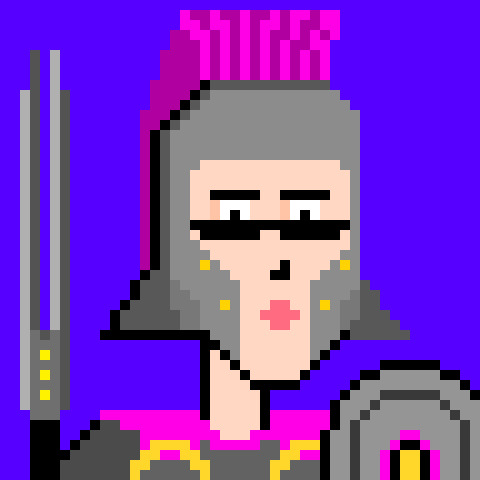
Born in 395 AD in Rome, Louisa Capitolinus, illegitimate daughter of Emperor Theodosius I and the last Vestal Virgin, was raised in secrecy at the Temple of Jupiter. During the sack of Rome in 410 AD, Louisa escaped through an interdimensional portal where she served as a centurion in an alternate matriarchal timeline.
ATTRIBUTES
ID#: 754/1000
Name: Louisa Capitolinus
Race: Roman
Type: Centurion
Avatar Rarity: Common
WAX Rarity: Common
Class: Fighter
Attack: 7
Defense: 8
Speed: 9
Tagline: “You may have to fight a battle in multiple dimensions to win it.”
LORE
Date of Birth: 395 AD
Place of Birth: Rome
Backstory:
Louisa Capitolinus was born during turbulent times in 395 AD. Her mother, Concordia Capitolinus, was known as the last Vestal Virgin after Emperor Gratian confiscated the revenues of the order in 382 AD, effectively ending the Cult of Vesta. Concordia begged the next Emperor, Theodosius I, to reinstate the order, who demanded she sleep with him in return. For years, she refused the Emperor’s advances, yet finally submitted to him on a trip to Mediolanum. Months later, Theodosius died of a disease involving severe edema, and Concordia was left to hide in the Temple of Jupiter Capitolinus to raise her child in secrecy.
Louisa and her mother lived in harmony and secrecy in the temple on Capitoline Hill until 410 AD during the famous sack of Rome. As the Visigoths looted, burned, raped and pillaged their way across the great city of Rome, an interdimensional time portal at the Temple of Jupiter opened, providing immediate access to infinite timelines. As the ravaging Goths approached, Concordia pushed her beautiful virgin daughter into the swirling abyss rather than see her violated by the invaders.
Louisa fell flat on the hard marble floor as the swirling blue portal disappeared behind her. Immediately she noticed the tiles surrounding the large chamber were clear and spotless not tarnished, chipped and stained as she remembered moments ago. Hearing women’s voices approaching from the adjacent chamber, and with nowhere to escape, Louisa rose to meet them head on. The women were dressed like soldiers, fitted with armor, capes and brandishing short swords. Both were of average height and build. “Well, well, well, lookie’ what we have here”, said the dark haired one on the left. “Another deserter!” Centurion Alexa is going to be pleased when she sees us haul you in chains!”
To be Continued…
LINKS
OG RomanPunk on ETH OpenSea:
WAX Trading Card:
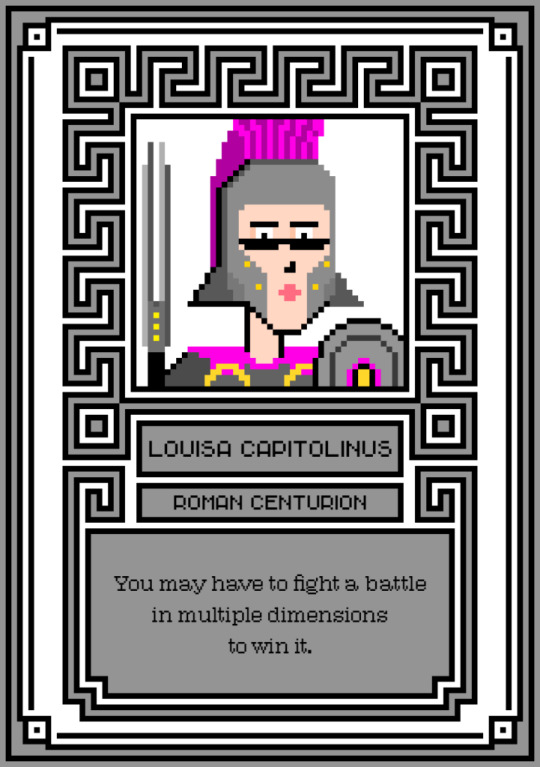
#nft art#nftartist#nfts#nftart#crypto art#cryptoart#crypto#nft#digitalart#modern#nftcommunity#cyberpunk#romanpunk#romanpunks#wax blockchain#pixel art#nftcreators#opensea#pixelart#alternate history#ancient history#ethereum#8 bit aesthetic#pixel aesthetic#pixel illustration#the sandbox#worldbuilding#fiction#character design#concept art
4 notes
·
View notes
Text
What are Non-Fungible Tokens (NFT)?
if you’re growing an app or game round non-fungible tokens, it’s critical to recognize what precisely makes them distinct from traditional ERC-20 tokens. while non-fungible tokens are specific and can't be interchanged with each other, fungible tokens can be without difficulty swapped out. So if you lose your token in change for some service or true on one platform, you can without difficulty replace it with any other same token on some other platform. That kind of interchangeability isn’t feasible while the use of non-fungible tokens due to the fact they each need to preserve individuality.
How Does an NFT market paintings?
The concept of a non-fungible token is particularly new. It’s not each day that you listen approximately some thing like CryptoKitties. however what precisely are non-fungible tokens? Non-fungible tokens (NFTs) will have one-of-a-kind utility however all serve to prove ownership of particular property by some means. some function as collectibles and others are intended for use as usable digital goods or maybe currencies! with a purpose to create a successful NFT marketplace, it’s important to understand why humans might purchase them and the way they feature in the blockchain ecosystem.
types of NFT marketplace systems:
universal non-fungible token web sites sell crypto items, be it a work of virtual artwork or a domain call.
area of interest peer-to-peer marketplaces are centered on offering unique virtual assets.
The blessings of developing an NFT market App
First and essential, an NFT market app lets in people to create their personal market to your app. This manner, users of your platform have get right of entry to to the whole thing they need to begin promoting in an online capacity. greater than something else, you’ll also be capable of attain a huge variety of those who won't have ever taken into consideration the usage of an app or website to buy and promote merchandise. as an example, buyers and sellers could be unfold across masses of states or even countries, making it tons extra difficult to discover each other in a few instances; however, with an NFT market app in region, you may make the ones connections plenty less complicated for all events concerned.
Key Takeaways while Designing an NFT marketplace App
whilst designing an NFT market app, you want to make sure that it can manage high call for. the very best manner to do this is with the aid of using non-fungible tokens (NFTs) on a public blockchain; it’s certainly one of their most large benefits. but your market still desires a good way to cope with high volumes of users. The wide variety of transactions in step with second and agreement speed are key things you want to don't forget whilst selecting which blockchain technology and architecture will first-class support your desires.
pointers to Create your personal NFT market
earlier than you start developing your app, there are three things to recollect:
1) How lots do you want to charge users?
2) How will revenue be calculated on every side of your marketplace?
three) How will your app take care of transactions and buying and selling in actual-time?
when you have a solution to these questions, it’s time to get began.
know-how how to Create a fully purposeful NFT marketplace App & Key advantages
step one is to choose a improvement framework that works first-rate with what you’re seeking to construct. a few apps can be built from scratch, but if yours calls for capability like multiplayer gaming or a few type of tokenization process, probabilities are you’ll need certainly one of several frameworks already advanced by using different developers.
functions of NFT marketplace
Storefronts: Non-fungible tokens are nearly identical to an e-trade site. They need a clean, clear interface that offers the consumer with all the important gear without being complicated or tough to navigate. at the same time as it’s not possible to purchase individual non-fungible tokens from their authentic creators, you could purchase many distinctive objects from one writer the use of their intellectual belongings. these gadgets are given tags as they’re launched.
attempting to find objects: seek functions are necessary due to the fact they make buying things more reachable with the aid of sincerely typing in what you want in place of scrolling through infinite options searching out what you want.
Filtering of Searches: clear out capabilities permit consumers to kind things in diverse methods which include price, artist, rarity, price techniques, listing popularity, and extra – making this purchasing revel in much smoother overall!
advent of Listings: If a person wishes to list a record, the market have to provide an clean and hassle-loose direction to make it convenient. The market should be able to offer the person with clean uploading commands as well as bureaucracy that provide promoting records.
Listings’ popularity: For the dealers, the NFT market can listing records of people who regarded the file and bids made throughout an auction and alert whilst someone makes an offer. For the buyers, recognize whether or not the report has undergone an authentication process previous to making a purchase.
buying, Bidding, and public sale: feature that allows customers to buy and bid for the non-fungible tokens listed at the platform. The bidding characteristic consists of a date of expiration of the bid and permits every of the users to view details about the modern-day reputation of the bid.
scores: ratings are an non-obligatory characteristic on both the app for purchaser and supplier to prevent frauds which includes misrepresentation or pulling out of a transaction before it executes.
Also read : Mobile App Development Company
2 notes
·
View notes
Text
Unique digital assets known as NFTs are stored on a blockchain network. This provides a safe means of purchasing, selling, and trading these digital assets for buyers, sellers, and traders. As a result, NFT marketplaces are becoming a well-liked venue for investors, collectors, and artists to purchase and sell NFTs.
0 notes
Text
Which are the top NFT marketplace platforms? What are the types of NFT exchanges?
Non-Fungible Token is undoubtedly the trendsetter in the world of modern digital markets. More recently, investors, creators, and people have been involved in buying and selling digital assets as NFTs. Idea Usher experts bring exciting insights to educate readers. Stay in this blog and learn all about the cost of developing an NFT marketplace. Additionally, we will shed light on some key aspects of NFT marketplace development.
The development of NFT has brought great future opportunities to the world. The huge rise of NFTs and the strong inclination of millennials has driven the development of NFT owners and markets. Marketplaces such as OpenSea are witnessing high revenues and large amounts of funding. Buyers can access marketplaces such as OpenSea and use cryptocurrencies such as ethereum and bitcoin to purchase virtual products. The marketplace charges a flat fee based on the total volume of NFTs acquired.
Types of NFT marketplace platforms
There are two main types of NFT Marketplace platforms:
1. Peer-to-peer marketplaces: These NFT marketplace platforms are designed to offer specific digital assets. A good example of a P2p NFT marketplace is Valuables. It’s a platform where tweets are basically bought and sold (unbelievable, but true). As another example, we can consider Glass Factory, where users can purchase digital holograms.
2. Universal non-fungible token website: In the universal NFT platform, any type of encrypted assets can be sold. It can be anything from digital art to domain. We know a lot about some of the top Universal NFT platforms, Rarible, OpenSea and Mintable.
Which are the top NFT marketplace platforms?
NFT market development is becoming more and more popular these days. NFTs are sure to bring new customers in the years to come. Therefore, this can prosper the market with a lot of selling and buying. Such exchange platforms provide a space for non-fungible token development companies to buy, sell and trade non-fungible tokens. Here are some of the top NFT marketplace platforms leading the way in 2021:

#1Opensea
Opensea is the first and one of the largest NFT marketplaces in the cryptocurrency world. The organization allows its users to trade digital collectibles, game assets and other blockchain-backed assets.
#2 Rarible
Rarible is another very popular NFT marketplace. It is a full-fledged platform that allows digital artists and creators to theme and monetize the crypto assets they create. In addition, Rarible is also a distributed network developed on Ethereum, which enables transactions by eliminating middlemen.
#3SuperRare
SuperRare is a marketplace to store and buy/sell unique and exclusive digital artwork. Interestingly, each artwork (digital) was created and certified by an artist in the network. Additionally, it is tokenized as a crypto collectible digital asset that sellers can own and trade.
#4 Hoard Exchange
Hoard Exchange is an NFT platform primarily focused on revolutionizing the video game industry. The organization caters to its users by using blockchain technology to enable actual ownership of virtual items and content. Additionally, Hoard Exchange offers downloadable content.
#5 Foundation
Foundation, or “Foundation.app” for short, is a platform that facilitates live digital art auctions and NFT auctions. It is a top-tier platform for real-time bidding on numerous community artworks. Foundation is an easy-to-use navigation suite. It is now the ideal destination for NFT artists and digital art lovers. All types of users participate in a (decentralized) auction of a series of creative digital assets.
#6 Binance NFT Marketplace
Built on the Binance Smart Chain (BSC) network, Binance NFT Market is an NFT platform that allows users to buy and sell various forms of digital artwork and collectibles. Launched by leading cryptocurrency exchange Binance, the platform aims to connect artists, creators, crypto enthusiasts and avid collectors to create and trade NFTs.
#7 Decentraland
Launched in 2020, Decentraland is an NFT platform built on the Ethereum blockchain for P2E virtual worlds. It provides NFT artists and creators with full ownership of their creations. Users can access a variety of digital collectibles on Decentraland, including plots, in-game clothing, and real estate, and the platform’s native TOKEN MANA is used to purchase all of these assets.
0 notes
Text
Augmented Reality (AR) NFTs
Augmented Reality (AR) NFTs are becoming increasingly popular with brands due to their ability to help increase revenue. The NFT turnover in the first six months of 2021 was more than $2.4 billion. The NFT market has grown by 10 times in the last two years. The story of NFT development is only just beginning.
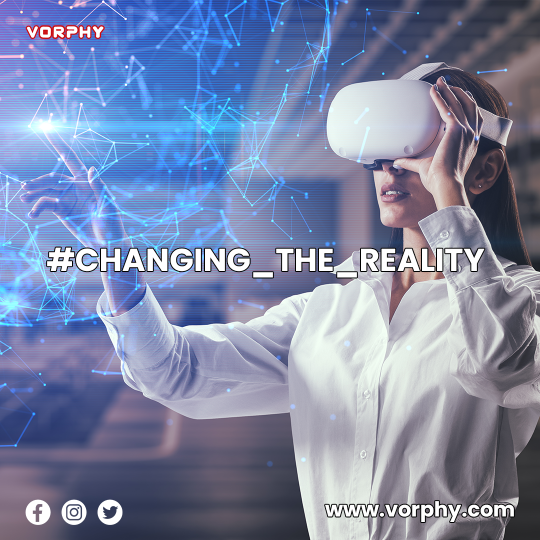
This article will help you understand the growing trend of Augmented Reality (AR) NFTs and suggest ways your brand can get involved. You will learn about AR NFT, the different types of AR projects, their key benefits, how Vorphy AR cards can be used to power these projects, and more.
Understanding NFT and how it works
NFT stands for Non-Fungible Token. Non-fungible items are unique and cannot be copied or replaced. When you create an NFT, you are creating a piece of code that is stored on the blockchain and attached to an asset. It is not the asset itself that is important, but the potential return on it. When you purchase an NFT item, you are paying for the right to own a digital asset. A unique identifier makes it easy to verify the authenticity and makes it impossible to falsify. You invest in the design and aesthetics of your products.
If you create and sell an NFT, the copyright still belongs to you. You have associated your name or brand with an NFT. How you back the value of security is important. What types of objects can be turned into NFTs? There are no limits to what you can imagine. Photos, images, music, paintings, videos, digital content, and augmented reality content all qualify as NFTs.The last space is the most lucrative for brands and we're interested in it. What makes AR NFTs unique is that they can be used for a variety of purposes, beyond just being stored on a blockchain. What exactly are Augmented Reality NFTs? Augmented reality NFTs are digital objects that are uploaded to the NFT marketplace. They receive unique identifiers that make them easily identifiable. This way, you can create and control almost any type of augmented reality content. AR NFTs can be either simple 3D objects or more complex AR experiences with sound and dynamic visual effects.
NFT and Augmented Reality: A marketplace
Brands are starting to see augmented reality as an effective way to market their products because it can provide a more immersive experience for their customers. Consumers are starting to get more comfortable with AR technology, and are using it more thoughtfully because of its existence. In this state, the AR NFT market is very lucrative to join. Brands must constantly follow the latest trends in order to gain attention. Stronger reactions are better, right? There are other types of campaigns too. They will help you increase brand awareness and attract followers through new PR channels. Lil Miquela raised over $82,000 through the use of NFTs to support the Black Girls Code project. NFTs drive attention and attention motivates action. AR technology is developed and has been found to be economically viable. This makes it a good investment for businesses. AR marketing campaigns are very effective at attracting customers, while virtual try-on and Web AR tools can help increase sales.
People's social status is based on their civic position, attitude to the problems, and their stickiness to a brand. All you need to do to get people's attention with your AR-powered image is to create something visually striking. AR connects the digital and real worlds, making it easy to interact with both. If your brand is represented online, it's natural to use NFTs. NFTs work well in conjunction with augmented reality, which opens up new markets, revenue streams, and audiences to engage with. Cryptocurrency, video games, and digital self-expression are all great ways to add value to AR NFTs. This can be done through face filters, virtual clothes, accessories, or anything else. Augmented Reality (AR) is more than just hype. It has the potential to change the way we shop and create online.
#augmented reality#ar vr companies#ar vr app development#ar vr services#ar vr development company#ar vr technology#NFTs AR
2 notes
·
View notes
Text
White Label NFT Marketplace: A Comprehensive Guide
The world of NFTs (Non-Fungible Tokens) has rapidly evolved, becoming a cornerstone of the digital economy. For businesses and individuals looking to enter this lucrative space, white label NFT marketplaces offer a seamless and customizable solution. This guide delves deep into what a white label NFT marketplace is, its benefits, and how you can leverage it to thrive in the NFT ecosystem.
What is a White Label NFT Marketplace?
A white label NFT marketplace is a pre-built platform that allows businesses to launch their own branded marketplace without developing one from scratch. These platforms come with all the necessary features and functionalities, enabling a quicker and more cost-effective entry into the NFT market. The term "white label" indicates that the platform can be rebranded with your logo, design, and customizations to reflect your unique brand identity.
Key Features of a White Label NFT Marketplace
1. Customizable User Interface
A standout feature of white label solutions is their highly customizable user interface. This allows you to create a marketplace that aligns with your brand’s aesthetics and user experience preferences. Customization can include branding, layout changes, and integration of specific features that cater to your audience.
2. Robust Security Measures
Security is paramount in the NFT space. White label NFT marketplaces come equipped with advanced security protocols to protect against fraud, hacking, and other malicious activities. Features like end-to-end encryption, two-factor authentication, and secure smart contracts ensure the safety of transactions and user data.
3. Scalability
These platforms are built to scale with your business. As your marketplace grows, the infrastructure can handle increased traffic and transaction volumes without compromising performance. This scalability is crucial for businesses looking to expand their reach in the NFT market.
4. Integrated Wallets and Payment Gateways
A critical component of any NFT marketplace is the ability to handle transactions seamlessly. White label solutions come with integrated wallets and support multiple payment gateways, facilitating easy buying, selling, and trading of NFTs. This integration simplifies the user experience and increases the platform’s accessibility.
5. Multi-Chain Support
To appeal to a broader audience, many white label NFT marketplaces offer multi-chain support. This means that the platform can operate on various blockchain networks like Ethereum, Binance Smart Chain, and others, giving users more options for creating and trading NFTs.
Benefits of Using a White Label NFT Marketplace
1. Cost-Effective Solution
Building a marketplace from scratch requires significant time, money, and technical expertise. A white label solution dramatically reduces these costs, providing a ready-made platform that can be customized to your needs. This allows you to enter the market more quickly and efficiently.
2. Time Efficiency
Developing a custom NFT marketplace can take months or even years. White label solutions expedite this process, enabling you to launch your marketplace in a matter of weeks. This speed to market is a crucial advantage in the fast-paced world of NFTs.
3. Proven Technology
White label NFT marketplaces are built on proven technology stacks that have been tested and optimized. This reliability ensures that your marketplace runs smoothly and provides a high-quality user experience.
4. Focus on Branding and Marketing
With the technical aspects taken care of, you can focus on what you do best: branding and marketing your marketplace. This focus can help you attract and retain users, setting your platform apart from the competition.
How to Choose the Right White Label NFT Marketplace Provider
1. Assess Your Needs
Before selecting a provider, assess your specific needs. Consider factors like the types of NFTs you want to support, your target audience, and any unique features you require. This assessment will help you narrow down providers that can meet your needs.
2. Evaluate the Technology Stack
Look for providers that use robust and scalable technology stacks. Ensure that their platform supports the blockchain networks you’re interested in and offers the security features you need.
3. Customization Options
Check the level of customization offered. The more customizable the platform, the better you can tailor it to your brand’s identity. Ask about design options, feature integrations, and any limitations on customization.
4. Support and Maintenance
Consider the level of support and maintenance provided. A good provider should offer ongoing support to help you manage and troubleshoot your marketplace. This support can be crucial in ensuring your marketplace runs smoothly over time.
5. Pricing and Licensing
Understand the pricing structure and licensing terms. Some providers may charge a one-time fee, while others may offer subscription-based models. Choose a provider whose pricing aligns with your budget and business model.
FAQs
What is the difference between a white label NFT marketplace and a custom-built marketplace?
A white label NFT marketplace is a pre-built platform that can be customized and branded, allowing for a quicker and more cost-effective launch. In contrast, a custom-built marketplace is developed from scratch, offering complete control over features and design but requiring more time and resources.
Can I integrate my existing blockchain wallet with a white label NFT marketplace?
Yes, most white label NFT marketplaces support the integration of existing blockchain wallet. This feature allows users to connect their preferred wallets, enhancing the convenience and user experience.
Blockchain wallet are digital tools that allow users to store, manage, and transact cryptocurrencies securely. They provide access to various blockchain networks, facilitating the seamless exchange of digital assets while ensuring robust security measures to protect against fraud and unauthorized access. Start using a blockchain wallet today to safeguard your digital assets. If you want to learn more about blockchain wallet visit our website.
How secure are white label NFT marketplaces?
White label NFT marketplaces prioritize security, implementing features like end-to-end encryption, two-factor authentication, and secure smart contracts. These measures protect against fraud and ensure the safety of transactions and user data.
Is it possible to switch providers after launching my white label NFT marketplace?
Switching providers can be challenging but not impossible. It depends on the provider’s terms and the level of customization and data migration involved. It’s essential to choose a reliable provider from the start to avoid complications later.
How do white label NFT marketplaces handle transaction fees?
Transaction fees are typically set by the marketplace owner. Some white label solutions may offer flexible fee structures, allowing you to determine how much to charge for transactions, which can include listing fees, sales commissions, and withdrawal fees.
Can I scale my white label NFT marketplace as my business grows?
Yes, scalability is a core feature of white label NFT marketplaces. They are designed to handle increased traffic and transaction volumes, ensuring that your marketplace can grow with your business.
Conclusion
A white label NFT marketplace presents a powerful and efficient way to enter the NFT space. With its customizable features, robust security, and scalability, it offers a comprehensive solution for businesses looking to capitalize on the growing NFT market. You can create a successful and thriving NFT marketplace by choosing the right provider and focusing on branding and user experience.
#nft wallet development#white label nft marketplace#white label crypto wallet#white label exchange crypto
0 notes
Text
Best Metaverse Real Estate Solutions in 2024: Your Guide to Virtual Property Ownership

What is Metaverse Real Estate?
Metaverse real estate refers to virtual land and properties within various digital worlds and platforms that make up the metaverse. These digital environments, powered by blockchain technology and virtual reality, offer spaces where users can interact, work, play, and conduct business. Unlike traditional real estate, metaverse properties are entirely virtual, yet they hold significant value due to their potential for creating unique experiences, business opportunities, and social interactions. In essence, metaverse real estate is the backbone of these virtual worlds, providing the infrastructure for a new era of digital existence.
How Do I Purchase Property in the Metaverse?

Purchasing property in the metaverse is a relatively straightforward process but requires some familiarity with digital currencies and blockchain technology. Here’s a step-by-step guide:
Choose a Platform: Select a metaverse platform that aligns with your interests and goals. Popular platforms include Decentraland, The Sandbox, and Cryptovoxels, each offering different types of environments and communities.
Create a Digital Wallet: To interact with the blockchain, you need a digital wallet, such as MetaMask. This wallet will store your digital currency and assets.
Acquire Cryptocurrency: Most metaverse platforms operate on cryptocurrencies, typically Ethereum. Purchase the necessary amount of cryptocurrency through an exchange like Coinbase or Binance.
Browse Listings: Navigate to the marketplace within your chosen platform. You can find various listings of land and properties for sale.
Make a Purchase: Once you’ve found a property that suits your needs, you can complete the transaction using your digital wallet. The property will then be transferred to your wallet as a unique non-fungible token (NFT), confirming your ownership.
Verify Ownership: Ensure the property is now listed in your digital wallet and on the platform’s ledger.
What Are the Benefits of Owning Virtual Real Estate?
Owning virtual real estate offers several compelling benefits:
Investment Potential: Just like physical real estate, virtual properties can appreciate in value. Early adopters have seen significant returns on their investments as the popularity of metaverse platforms grows.
Monetization Opportunities: Virtual landowners can monetize their properties in various ways, such as renting them out, hosting events, or selling digital goods and services.
Creative Freedom: The metaverse offers limitless possibilities for creativity. Owners can develop unique environments, games, and experiences that can attract visitors and generate income.
Global Reach: Unlike physical real estate, virtual properties can be accessed by anyone with an internet connection, offering a global audience and market.
Community Building: Owning property in the metaverse allows individuals and businesses to create and foster communities around shared interests and activities.
What Types of Properties Can I Buy in the Metaverse?

The metaverse offers a diverse range of property types, catering to different needs and preferences:
Land Parcels: These are basic plots of land that can be developed according to the owner’s vision, similar to vacant lots in the physical world.
Virtual Homes: Digital residences where users can personalize their living space and interact with friends and family in a home-like environment.
Commercial Spaces: These include virtual shops, offices, and venues where businesses can operate, sell products, and host events.
Event Venues: Specialized properties designed for hosting virtual events, such as concerts, conferences, and exhibitions.
Gaming Zones: Areas dedicated to gaming experiences, where developers can create and monetize interactive games and attractions.
Is Investing in Metaverse Real Estate Safe?
Investing in metaverse real estate, like any investment, carries risks that potential buyers should be aware of:
Market Volatility: The value of virtual properties can fluctuate significantly based on demand, platform popularity, and broader cryptocurrency market trends.
Platform Stability: The long-term success of your investment depends on the stability and growth of the metaverse platform. It’s crucial to choose platforms with strong user bases and active development teams.
Security Risks: As with all digital assets, virtual properties are vulnerable to hacking and other cyber threats. Ensuring your digital wallet and accounts are secure is essential.
Regulatory Uncertainty: The legal landscape surrounding virtual property ownership is still evolving. Changes in regulations could impact the value and ownership rights of metaverse real estate.
Technological Dependency: The viability of virtual real estate depends on continuous advancements in technology and user adoption of virtual reality and blockchain systems.
How Can I Develop and Monetize My Metaverse Property?

Developing and monetizing metaverse property involves creativity, strategy, and leveraging various metaverse real estate development services. Here are some steps to get started:
Plan Your Development: Decide on the type of property you want to develop. This could be a virtual store, a game, a social space, or an event venue. Detailed planning will guide your development process.
Use Development Tools: Many platforms offer tools and resources for building and customizing properties. For instance, The Sandbox provides a suite of tools for creating 3D environments and experiences.
Collaborate with Experts: Consider partnering with a Metaverse Real Estate Development Company. These companies specialize in creating and managing virtual properties, ensuring professional quality and optimized functionality.
Implement Monetization Strategies: There are several ways to monetize your property:
Renting: Lease your property to other users or businesses for passive income.
Event Hosting: Organize and host virtual events, charging admission or selling virtual goods.
Advertising: Allow brands to advertise on your property, creating an additional revenue stream.
E-commerce: Set up a virtual shop to sell digital and physical goods.
Promote Your Property: Use social media, metaverse forums, and in-platform promotions to attract visitors and potential tenants. Building a strong presence and engaging with the community is crucial for success.
Stay Updated: The metaverse is constantly evolving. Keep up with the latest trends, updates, and opportunities to ensure your property remains relevant and attractive.
In conclusion, the metaverse presents a groundbreaking frontier for real estate investment and development. By understanding the intricacies of purchasing, owning, and monetizing virtual properties, you can leverage the best metaverse real estate solutions to tap into this burgeoning digital landscape. As with any investment, due diligence and strategic planning are key to navigating the dynamic world of metaverse real estate.
#MetaverseRealEstate#VirtualPropertyInvestment#DigitalRealEstate#VirtualLand#MetaverseInvestments#VirtualAssetManagement#FutureOfRealEstate
1 note
·
View note